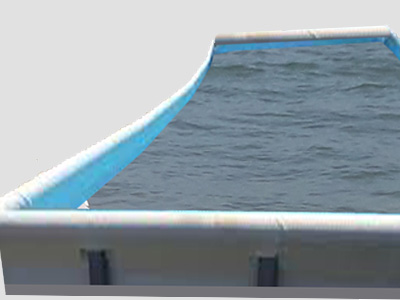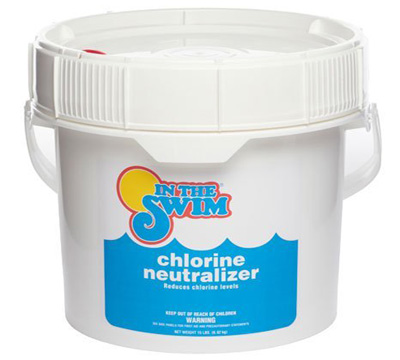Chlorine is a sanitizing chemical of water. It helps to keep pool water clean, as well as reducing and preventing algae growth and other unwanted water troubles. There are several types of pool chlorine such as gaseous, liquid chlorine, tablet chlorine, granular chlorine and powdered chlorine. You can discover here about the different types of pool chlorine to keep your pool water clean and safe all through the year.
| Table of Contents: |
Gaseous chlorine
At molecular state chlorine is a gas. It is very cheap among the different types of pool chlorine and can be available for swimming pool water sanitation. In this form, the available chlorine percentage is very high. But it has some restriction, it is extremely dangerous to use. The gas is acidic, so needs a lot of additional base to maintaining pH level. Therefore, the use of it is very rare.
Swimming pool liquid chlorine
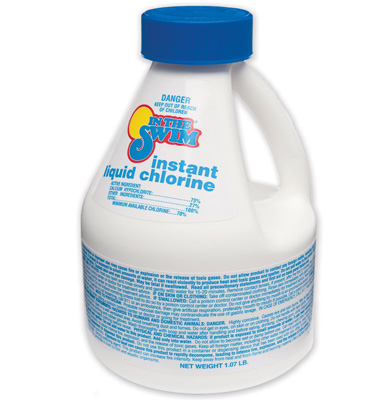
In The Swim Instant Liquid Chlorine for Swimming Pools – 4 x 1.07 Pound Bottles
Liquid chlorine is one of the common chlorine that is used in pool as a sanitizer. A lot of larger swimming pools use this to get economic advantage. Sodium hypochlorite (NaOCl) is the most common swimming pool liquid chlorine. Chemically, it is identical to bleach. The available chlorine is 10 – 15%. It is produced by passing chlorine gas through a solution of caustic soda. Although the liquid can be discharged directly into the pool water but it is recommended to use with a diaphragm pump or a peristaltic pump. Chlorine pump can helps to the pool operator to control the flow rate of the water. The drawbacks of this type chlorine is that It’s not stabilized, similar to pool chlorine tablets, therefore it is needs more cyanuric acid to shield the chlorine from the sunlight. Moreover, the pH level is high, approximately 13. Hence needs extra lot of acid to lower the pH level. It is not suitable for residential pools because of limited availability, corrosive and dangerous to handling. Florida is the most common state for pool liquid chlorine market and is sold in a 4×1 gal pack.
Swimming pool chlorine tablets
Tablets are other types of pool chlorine that is used in large or small pools. The most common chemical in tablet is Trichloro-s-triazinetrione. Last few years, a great amount of chlorine is used in pool water as in this form. This organic compound is produced by the reaction of cyanuric acid and chlorine gas. The available chlorine of this compound is about 90%. The pH level of this type of swimming pool chlorine tablets is low almost 3, hence it is required to add some base to maintain pH level.
This swimming pool water kits is preferred more than pool liquid chlorine. The swimming pool chlorine tablets are dissolved slowly hence they are suitable for floaters, feeders or skimmer. It is very easy and effective to apply and provide more exact results but expensive. As the swimming pool chlorine tablets can stain and etch plaster, corrosive to equipment and deteriorate vinyl, then it is not wise decision to thrown directly into the pool water.
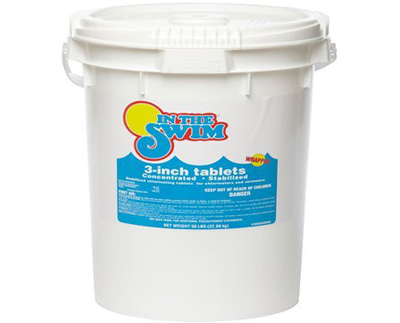
In The Swim 3 Inch Pool Chlorine Tablets 50 lbs.
Granular pool chlorine
Granular chlorine is another type of pool chlorine. There are different types of Granular pool chlorine such as:
Dichloro-s-triazinetrione
Dichloro-s-triazinetrione is one of the granular pool chlorine. The available chlorine of this compound is about 62%. This granular pool chlorine dissolves fast and works accurately on contaminants. The pH level of this compound is almost 7. It is a stabilized form of granular chlorine because it consists of cyanuric acid. It can be apply as normal sanitation or as a shock. The disadvantage of it is highly expensive depends on available chlorine.
Lithium Hypochlorite
Lithium Hypochlorite is another type of granular pool chlorine. The available chlorine of this compound is about 35%. As like Dichloro-s-triazinetrione it is also very costly product. The pH level is almost 11, so needs additional acid to adjust pH level of the pool water. The main advantages of this granular pool chlorine are that it does not increase the pool hardness non-flammable, dust free, safe for vinyl liner pools and dissolves extremely fast. It can be applied as shock or for regular chlorination.
Calcium Hypochlorite
The most common type of granular pool chlorine is Calcium Hypochlorite. Moreover it can be also purchased as tablet form. The available chlorine of this compound is about 65%. The pH level is almost 12, so needs additional acid to adjust pH level of the pool water. The main advantages of this granular pool chlorine are that it is low price, has a rapid demolish rate against algae and chloramines, and dissolve more rapidly than the larger granules. For this reason, Calcium Hypochlorite is very popular and commonly used as shock treatment throughout the country. The main problem is that it is increase hardness level, very dusty and becomes contaminated easily by foreign substances which can cause combustion. Moreover it is un-stabilized.
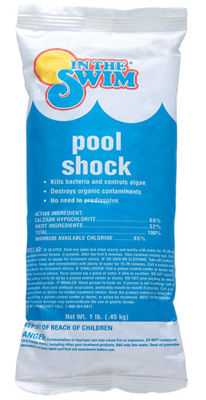
In The Swim Chlorine Pool Shock – 24 X 1 lb. bags
Powdered Chlorine
Powdered chlorine is another type of pool chlorine; it is also known as powered shock. It is generally used when pool water needs an intense duty cleaning. Normally have to use it on a monthly basis.
Summary
Slow dissolving and slow reacting chlorine is suitable for everyday chlorination of small or large pools, so pool chlorine tablets or sticks is best for in this case. Moreover, it is easy and risk-free to store and handle. Due to rapid dissolve character, granular chlorine is appropriate so as to shock the pool. Pool liquid chlorine is suitable for larger swimming pools. In case of Vinyl liner pools, it is recommended to dissolve pool shock before adding to avoid bleaching the liner; or apply Lithium pool shock. It is unsafe to mix different types of chlorine. Especially granular pool chlorine is dangerous to mix with other chemicals such as algaecide, antifreeze, soda pop, so carefully handle and store.
